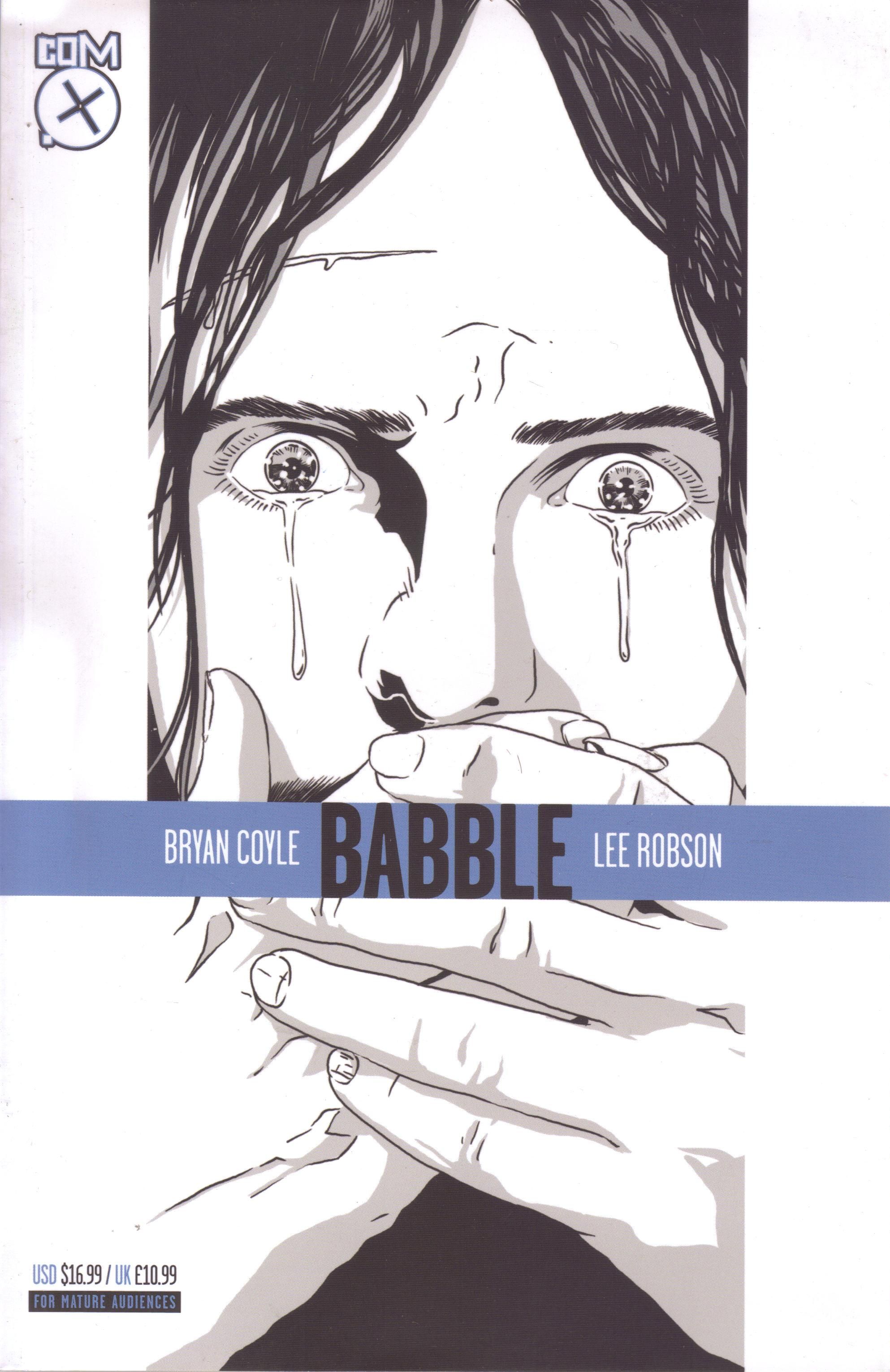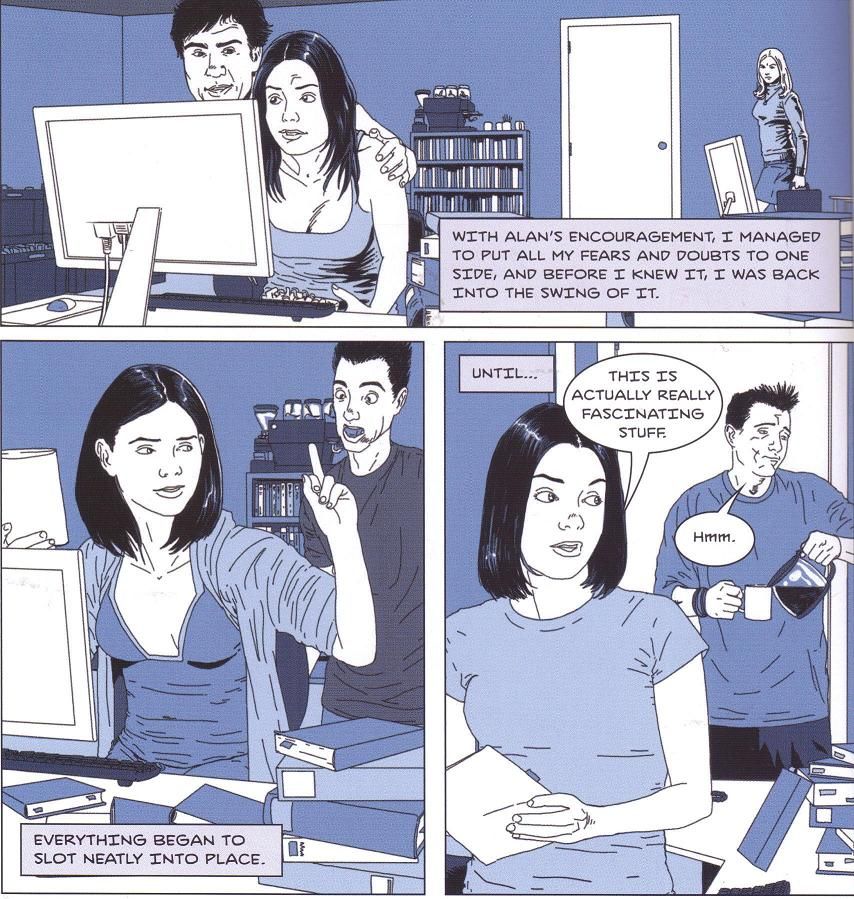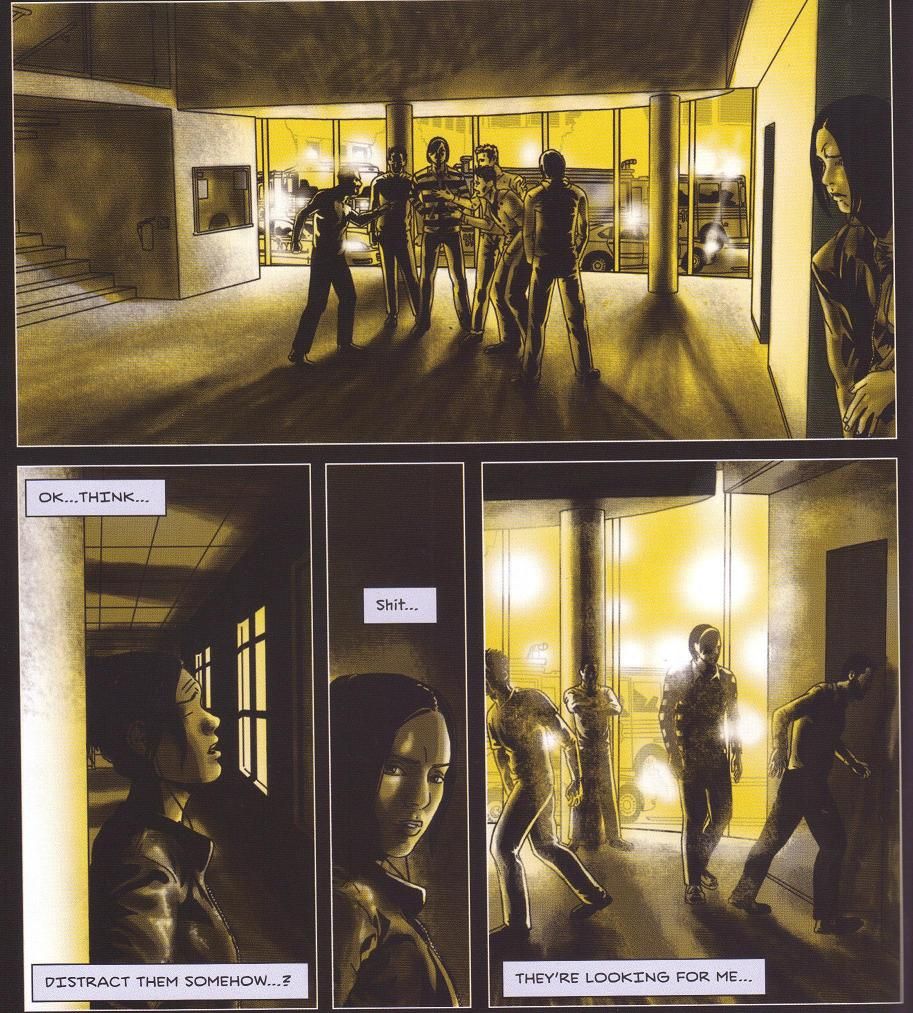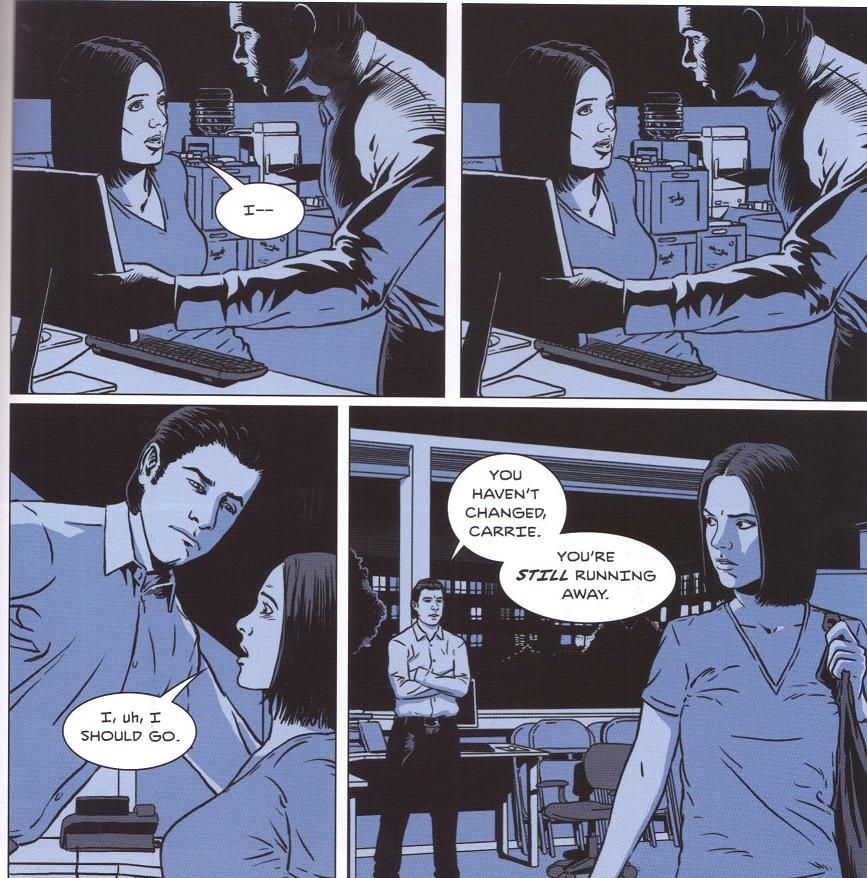Oh, it's a clever-titled graphic novel! As someone who can't name anything well (seriously, I suck at titles), I always appreciate a simple yet elegantly clever title! But will the work live up to it????
Babble is written by Lee Robson, drawn by Bryan Coyle, lettered and edited by Eddie Deighton, also edited by Benjamin Shahrabani and Jon Sloan, and published by Com.X. It will cost you no more than $16.99 for the privilege of reading it!
Robson's premise is devilishly simple, and gives the book a great hook: What if someone tried to reconstruct the language that people spoke before building the Tower of Babel, when God famously got all peevish and created a bunch of different languages so humanity couldn't build a big phallic symbol?
The idea of an "ur-language" is pretty fascinating, and in this book, a college professor wants to figure it out so he can create a "universal translator" - the idea being that this "ur-language" is the root of every language on Earth, so that would work, right? Yes, we have to suspend our disbelief just a tiny bit - finding a root language is a pipe dream - but it's a compelling idea.
Robson chucks a spanner in the works right away by showing us his main character, Carrie, in deep doo-doo. She's being stalked by people who seem to have lost the ability to speak, and once we find out that her mentor - Alan Curtis - is researching this language, we begin to try to puzzle out how it's going to go horribly wrong. It's not a bad tack to take - if we didn't begin with Carrie in trouble, we'd probably figure out that something horrible was going to happen, and we'd be trying to figure out what it will be. Robson takes that away from us, so we're left trying to figure out why things go horribly wrong, which is far more interesting.
Robson gives us four well developed characters to follow as the action plays out. There's Carrie and Alan, one-time student and professor who, of course, had an affair when she was his student and who, of course, end up in bed again. There's Alan's cold wife, Vanessa, who knows he's a philanderer but doesn't seem to care because he's brilliant at what he does. There's Si, the other researcher, who becomes Carrie's best friend. Robson does a very nice job making these characters interesting even though he toys with some clichés - Carrie and Alan carrying on an affair (he's estranged from his wife, but still), Si being gay - and his fine dialogue not only helps move the story along but also keeps their interactions lively. Plus, Robson subverts some of these clichés well, like making Alan kind of a cad, which Carrie knows even as she still finds herself drawn to him. It's a good choice. Meanwhile, Carrie finds out that the professor who started the project killed himself, and when she starts digging into his notes, she finds some disturbing conclusions he reached.
But she keeps digging, and of course she begins to find out what might happen if they crack the code. We already know what will happen, because we've been jumping back and forth between the present, in which things have gone to hell, and the past, which is where Carrie and the others are trying to figure it out. But Robson does a nice job building the tension as we come closer to finding out the answer to what happens. It's not a perfect answer - Robson doesn't really explain why people stop acting rationally, unless we're supposed to believe it's the shock of what happened to them - but it's still pretty keen.
What makes the book work isn't really the overall "horror" plot, although that's pretty good. Robson subtly shows what happens when language fails people, as the characters in the book don't really communicate well with each other even though they're speaking the same verbal language. The dialogue is well done and the character do actually talk to each other, but there's always the implication of what's unsaid and how much better things would be if only people weren't afraid. It's pretty cool that Robson is able to get this into the story, because the book is about communication, after all. Carrie ought to say more things to Alan, and Alan ought to say more things to Vanessa, but they're either too afraid or they're too caught up in their own things. It's a nice commentary on how Alan's project is probably doomed from the start - people who speak the same language can't talk to each other, so why would a universal translator work?
Coyle's sturdy art isn't dazzling, but it gets the job done. He and Robson decided to use two different color palettes for the "present" and the "past," and the contrast between the present's dull brown and the past's more stark blue is handled well.
Coyle does give each character a good look - we can tell them apart rather well, in other words - and he really does a nice job with Carrie in the "present," when things have gone to hell. She's terrified but steely as she tries to figure out a solution to her problem, and Coyle does a very nice job showing all her emotions on her face and how she moves. Like Robson's dialogue that occasionally hides things the characters don't want to say, Coyle is pretty good at using body language to show the way the characters interact with each other. As with the words in the book, the art needs to show the subtleties of non-verbal language that Alan's "ur-language" might not be able to translate, and Coyle does a nice job with that.
There are a few small problems with Babble, like the issue I noted above and the way it ends - I don't want to give it away, but it seems like there's a solution people are missing - but overall, this is a very good graphic novel. Like the best horror, it draws its creepiness from what goes on in our mind as we read it, and Robson and Coyle are smart enough to let us discover what's going on in an almost leisurely fashion, which makes the revelations along the way all the more terrifying. It's a cool comic, and one you should check out if you have the chance.





